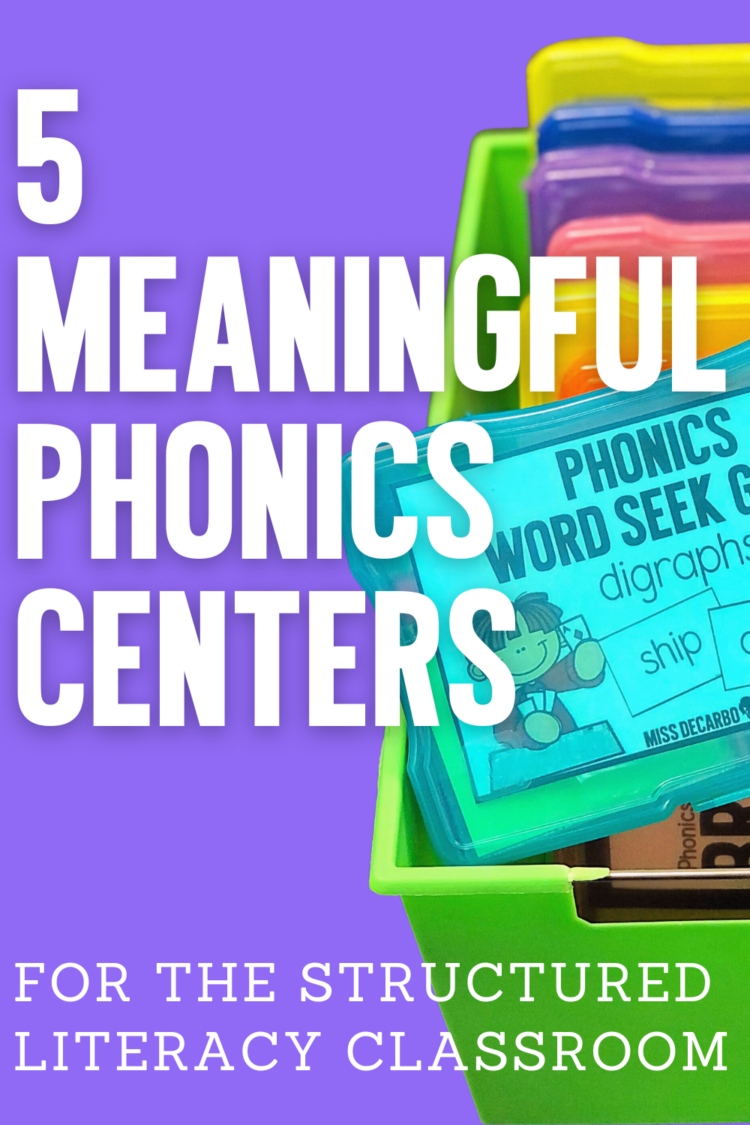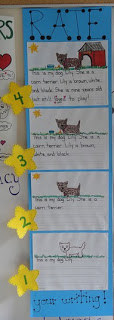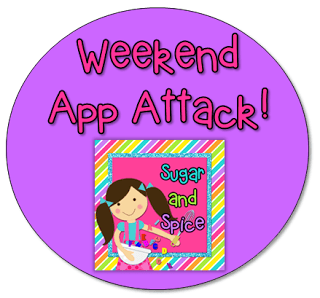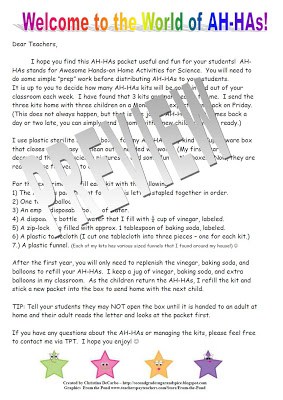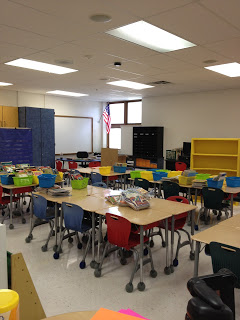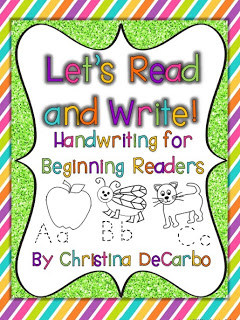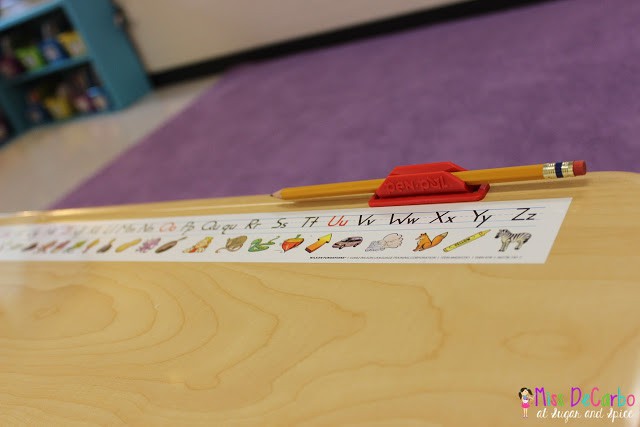5 Meaningful phonics centers for the structured literacy classroom
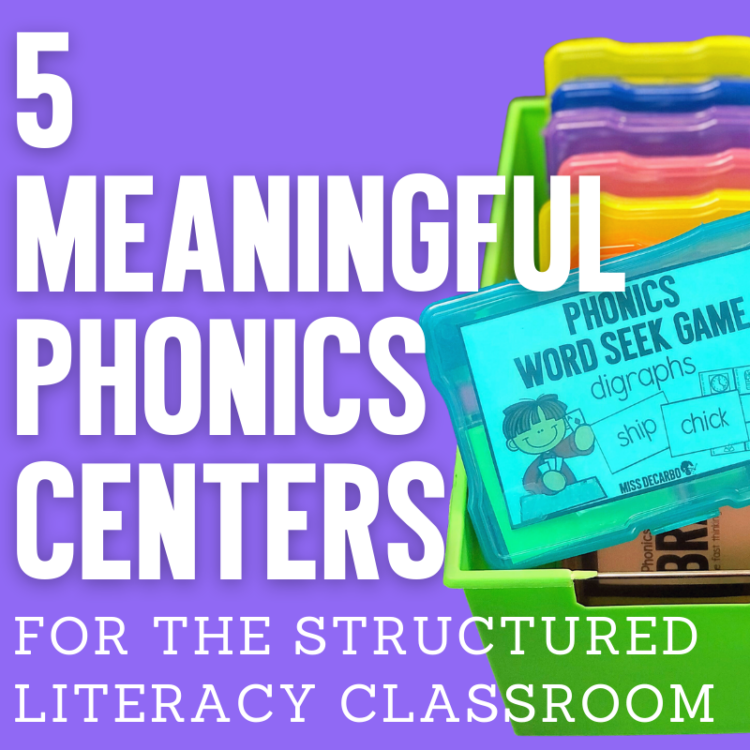
In this post, I’m sharing five meaningful phonics centers that are aligned to structured literacy classrooms. The keyword in that last sentence is the word meaningful. Centers that are designed to be busy work or take more time to prep than it takes the child to do are not meaningful. In a structured literacy classroom, instruction and independent practice should be explicit, direct, and deliberate. Literacy centers that provide meaningful practice for students follow what I call “the 4 R’s” – review, repetition, relevant, and ready-to-go. Before I share 5 meaningful phonics centers with you, let’s chat about each of these 4 R’s:
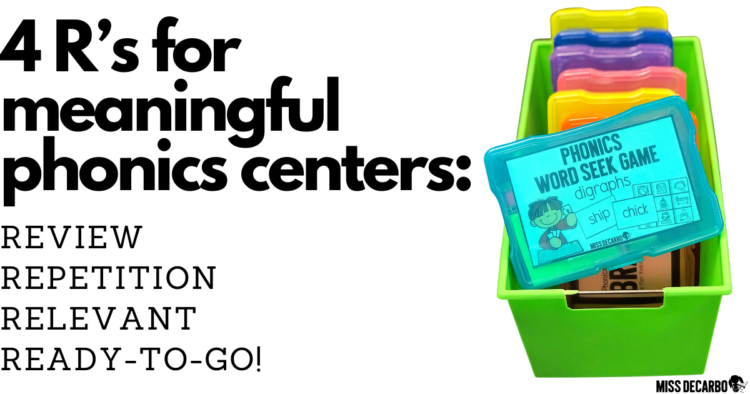
review- practice previously taught skills
Phonics centers should provide students with the opportunity to practice review skills. The students should have already been taught the skill and practiced it with the classroom teacher before being left to work on it alone. This means that phonics skills that you taught yesterday are most likely still too new for most students to practice independently. The child should be able to read the words accurately and independently. Use the phonics center to build automaticity skills within a partner or independent practice setting.
Repetition- Centers provide repeated practice
Students need LOTS of repeated practice as they gain accuracy and automaticity in word recognition skills and fluency skills. A quality phonics center should provide the students with a great deal of repetition for the skill(s) that are being targeted. I like literacy centers to be “never-ending”. This can mean that the center builds and grows with the students’ skills, can be played again and again, such as a game, or students can continue to read and reread for fluency practice. Repetition, repetition, repetition is the name of the game when it comes to independent practice!
relevant- centers meet students where they are
There’s nothing worse than sending a child to phonics centers they cannot complete successfully. A center is not relevant to a student if it is so challenging that he or she is unable to work independently on it, or the skill being targeted is not a skill needed to move the child along in his or her reading abilities. Not only does this result in classroom management issues, but it wastes learning time- for both the student and the teacher. Phonics centers should practice previously taught skills that students need to work on in order to gain automaticity skills for fluent reading and writing.
Ready-to-Go- Centers are little to no prep
I had a college professor once tell us: If it takes a child less time to do a center than it takes you to prep the center – it isn’t a valuable use of your instructional time. I always thought that was an accurate and wise statement! The best phonics centers are beautifully simple and do not require ten trips to Target, 84 novelty items, and 627 recording sheets. They are direct, intentional, and to the point when it comes to what the students will do- and how they should do it.
Now that we’ve chatted all about my 4 R’s for effective phonics centers, let’s take a look at five examples that meet all four of the 4 R’s: review, repetition, relevant, and ready-to-go. Here we go!
Phonics Word Builders
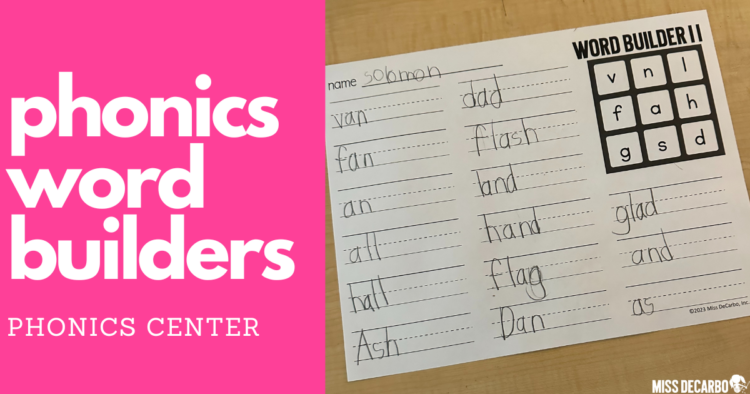
These phonics word builders will quickly become your students’ new favorite phonics game! Students use the included recording sheets (or dry-erase boards, paper, or notebooks) to create as many words as possible using the letters that are available in the box. Set a time limit, or use an open-ended format to keep your students thinking and building words for as long as they can! You can print the word builders, use only the recording sheets, or display the word builder you’d like on a screen or smartboard.
This phonics center is amazing because it can reach SO many students at various skills. Whether your students are at the two-phoneme word level or skilled enough to build longer words and multisyllabic words, EVERY student is challenged and able to play successfully! When two vowels are present in the box, students can build cvc words or combine the vowels to form words with vowel teams and multisyllabic words. EVERY student can work at his or her skill level and practice important phoneme-grapheme connections. This will become a favorite out of all of your phonics centers!
decode and draw phonics center
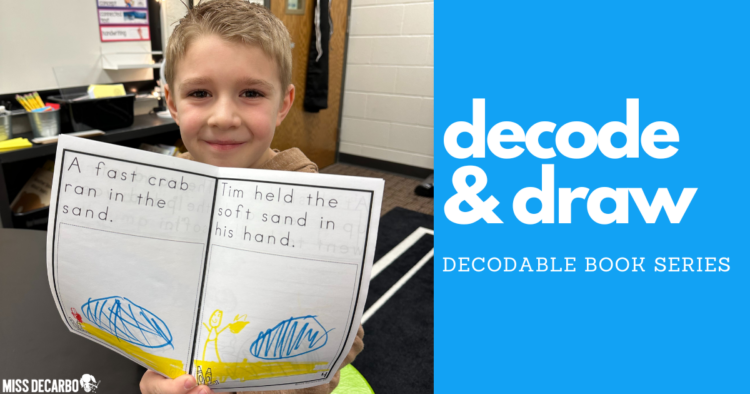
A decode and draw phonics center is simple and effective: Students decode and read words or text, and then illustrate that text to demonstrate comprehension. Students can also label their pictures for encoding practice! After students finish their illustration, they can read and reread the text for fluency practice. *Note: Set a time limit for illustrations so that the focus of the center is on reading practice and fluency development.
Students can illustrate any decodable passage simply by providing them with a blank piece of paper. You would also love my Decode & Draw Decodable Books! Students can read the text with you at the small group table, and then head back to their desks to illustrate, reread, and reread some more! They give students a chance to practice decoding skills, fluency, and comprehension. The final page of each book also provides word work practice, so that encoding repetition is embedded, too! The following sets are available on my website and in my TPT shop: CVC, DIGRAPHS, BLENDS, FLOSS WORDS, and GLUED SOUNDS. Decode and Draw phonics centers are a favorite for students and teachers!
Phonics word seek games
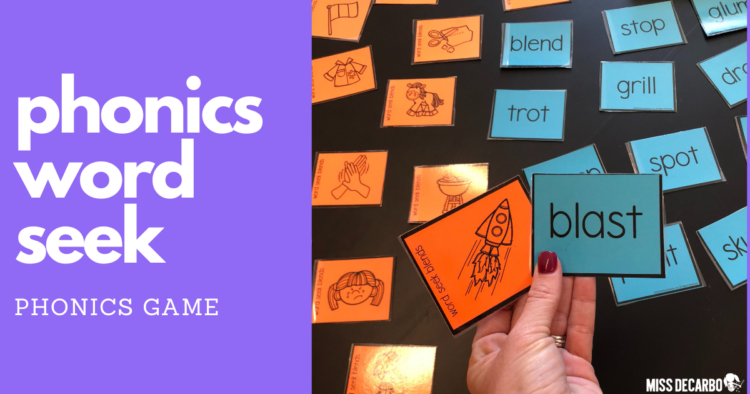
Phonics Word Seek is a simple game that can be played in multiple ways. It’s low-prep (ready to go) provides tons of repetition, comes with EIGHT focus areas that build in difficulty as your students grow (relevancy) and provide an engaging way to review taught skills.
Complete a simple matching activity by placing the word cards faceup. Place the word cards facedown on the table to play a memory game version!
Phonics Word Seek is a game that helps students work on phonics and decoding skills, visual memory skills, and word recognition skills. It can also be helpful in the area of vocabulary. Students benefit from practice and reinforcement with phonics skills and word work. Phonics Word Seek can easily be implemented into your whole group and small group routine to add fun and engagement to your phonics lessons!
Graphogame App
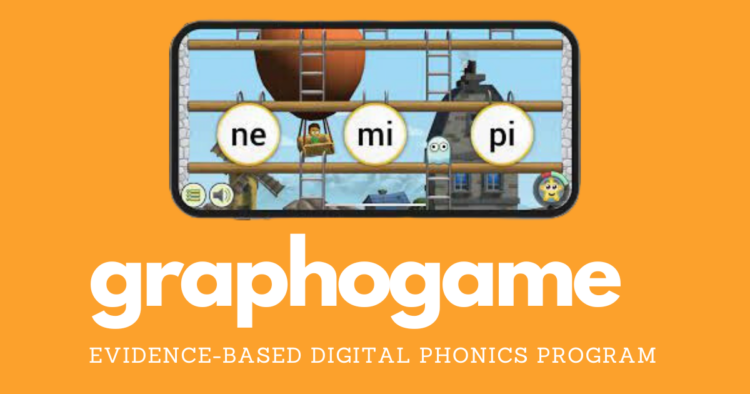
Remember, one of my four R’s was: ready-to-go. That’s because in order to make small group happen within a classroom, the use of technology during phonics centers can be really helpful. However, it can be hard to find TRUE and proven research and evidence-based technology programs for students. Enter GraphoGame!
GraphoGame is available in many languages and works with IOS, Android, and Microsoft systems. Students will connect spoken sounds to letters and words. They’ll receive a ton of repetition and a responsive learning experience. I love that the program is very cost-effective and aligns to the science of reading.
I will be honest and say the graphics are not the best, but that doesn’t seem to phase the kids! The app aligns with research in neuroscience and uses best practices for letter sounds, phonemic awareness, and phonics practice. Students will create their own avatar, and then play games as they work through phonics skills. The skills will progress as they go on- starting with letter-sound connection, blending, syllables and more. Click HERE to visit the GraphoGame website to learn more!
brainamin word recognition and fluency center
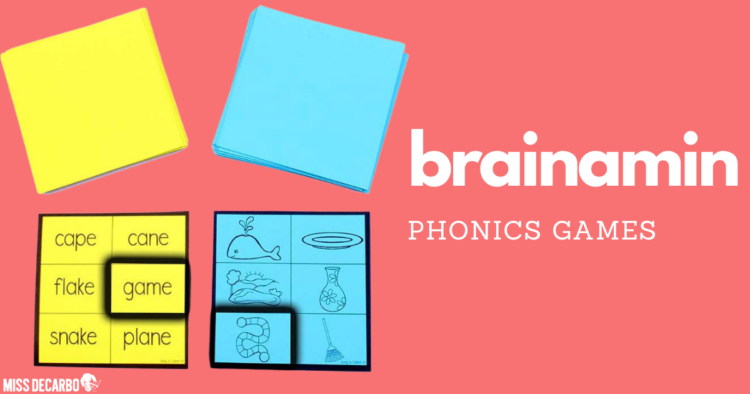
Have you tried my phonics Brainamin games as a phonics center yet?! It is so fun! If you love to play Spot It, you’ll love the phonics twist of Brainamin!
While playing the Brainamin games, students will work on important skills including phonics, fluency, and word recognition skills. Students must quickly put their “reading brains” to work by being the first player to uncover and call out the matching word and picture for each set of cards. While many educational games require students to wait their turn before challenging themselves and attempting the skill at hand, Brainamin allows ALL players to be actively involved in learning during each and every round.
Students must decode and read all six words on the word card. Then, they must quickly scan all six pictures and call out the match before any other player. Students could also play this game independently by using a sand timer to “beat the clock.” The result is a fast-paced game that takes “matching” to the next level by creating an engaging experience that mixes learning and fun!
meaningful phonics centers made easy!
Making phonics centers meaningful results in intentional independent practice time within our classrooms. All the resources above provide repetition and review practice, are relevant to student learning and can be differentiated for various needs, and are little to no prep- making them all “ready to go!” Providing a variety of literacy centers gives your students a chance to practice their phonics skills in different ways. I hope you can implement some of them in your classroom, and make phonics practice exciting and meaningful all year long!
Feel free to use the images below to pin this blog post for future reference, or, to share it with your colleagues! If you have any questions, feel free to leave me a comment below. I love hearing from you!
